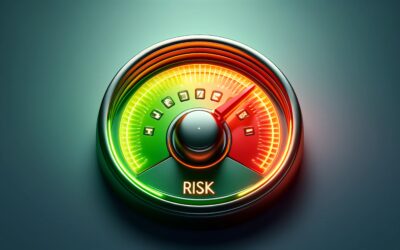At Ethia Strategies, we understand that a business’s ability to handle risks can define its success. The key is proactive risk management—anticipating challenges before they occur to safeguard your brand and reputation.
Proactive vs. Reactive Risk Management
Reactive risk management is necessary when unforeseen events arise, but over-reliance on it can lead to long-term damage. Conversely, proactive risk management involves identifying potential risks in advance, allowing businesses to mitigate threats and create strategies that prevent major disruptions. This forward-thinking approach fosters resilience and stability, enabling your business to operate smoothly, even in challenging times.
Real-World Examples: Proactive vs. Reactive
Consider Microsoft’s release of the Xbox in 2001, a great example of proactive risk management. Before entering a market dominated by Sony’s PlayStation, Microsoft invested heavily in research, technology, and market strategy, allowing them to address potential risks early. The result? The Xbox sold 1.5 million units in its first year, setting the stage for Microsoft’s gaming success.
In contrast, Enron’s collapse in 2001 illustrates the pitfalls of reactive risk management. For years, Enron concealed its financial instability through deceptive practices, only to face catastrophic failure when these issues finally surfaced. The company’s lack of proactive measures led to one of the largest bankruptcies in U.S. history, destroying its brand and reputation.
The Impact on Brand and Reputation
A strong risk management strategy is vital to protecting your brand’s reputation. When businesses proactively manage risks, they build trust with customers, investors, and employees. Companies that fail to do so risk damaging their credibility and losing their competitive edge. Those that handle risks effectively, however, not only protect their reputation but often emerge as market leaders, demonstrating strength and foresight.
Steps to Implement Proactive Risk Management
Here’s how your business can establish a proactive risk management plan:
- Risk Detection: Identify potential risks across operations, finance, reputation, and regulations.
- Risk Assessment: Analyze the likelihood and impact of each risk, then prioritize the most pressing ones.
- Risk Approach: Develop strategies to mitigate, accept, or transfer risks.
- Continuous Monitoring: Regularly monitor risk factors, adjusting strategies as necessary.
- Process Improvement: Continually refine your risk management processes to adapt to new challenges.
Case Studies: Proactive Strategies in Action
- FedEx’s crisis in the 1970s is an example of reactive risk management done right. When faced with a financial shortfall, founder Fred Smith made quick, unconventional decisions to keep the business afloat, ultimately saving FedEx.
- Conversely, Blockbuster failed to adopt a proactive approach as the market shifted towards digital streaming. Their slow reaction to emerging technologies led to their collapse in 2010, demonstrating how failing to anticipate risks can doom even established companies.
Conclusion
While reactive strategies can be useful in immediate situations, proactive risk management is essential for building long-term resilience and protecting your brand’s reputation. At Ethia Strategies, we specialize in helping businesses develop tailored risk management plans that safeguard against future threats and ensure continued growth.
Contact us today to learn more about how we can help your business stay ahead of the curve.




0 Comments